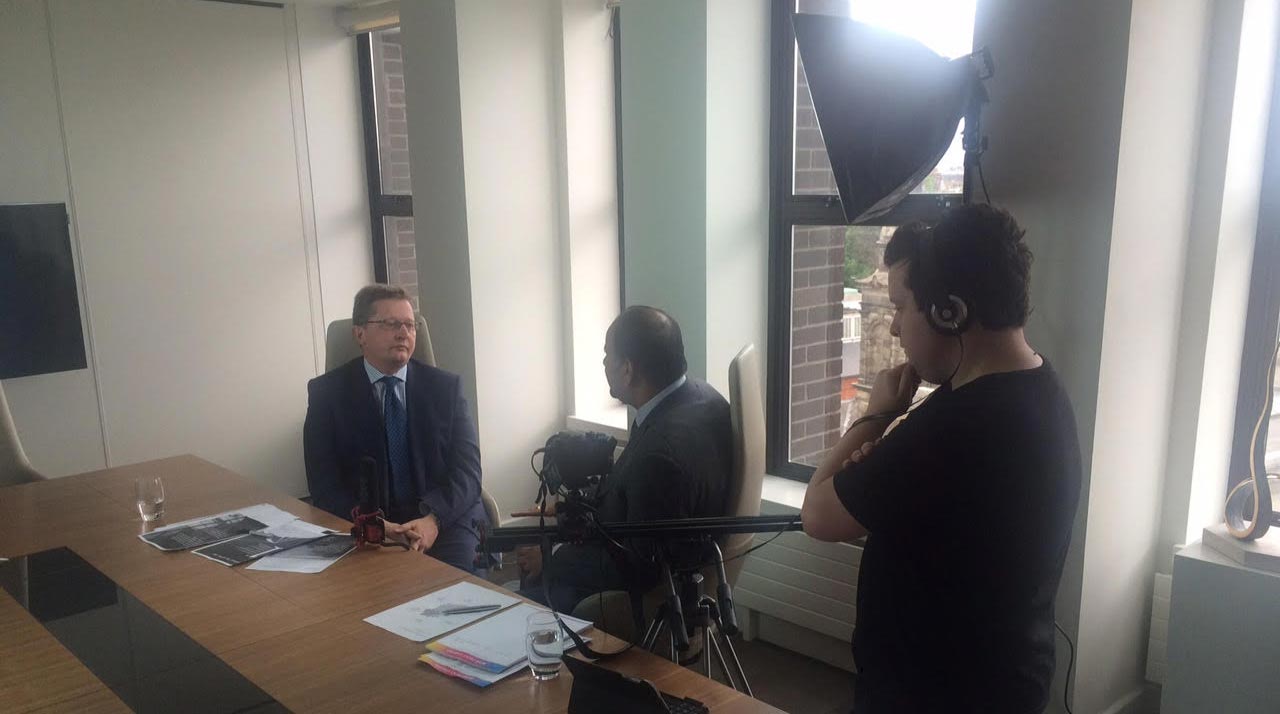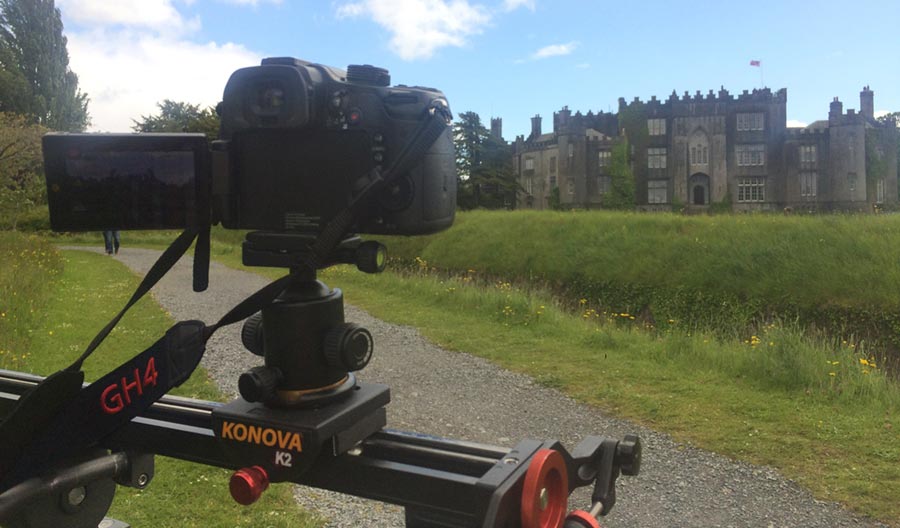The next step in our ‘behind the scenes’ series is a look at both the video shoot and the editing function, which is critical to the finished product for both animation and live action video. We grabbed Dermot, our Production Manager, in between his busy schedule and asked him a few questions about his job….
Q: So Dermot, talk us through an average day of shooting?
A: The day starts out by making sure all our equipment is good to go. We usually have three large cases of equipment so it can be very easy to forget something if it isn’t checked – it’s better to be looking at it, than for it! For the most part, interviews make up the bulk of live action video and it’s essential that this is done correctly.
From a technical point of view, the most important aspects to get right are good sound and lighting conditions. After that it is a case of making sure the subject is in focus and the camera is positioned at a flattering angle. The hardest part of any interview is making the person comfortable and relaxed. We like to take an informal approach to interviews where the subject is not just reading off a script and looking directly at the camera. Nine times out of ten, it’s better if they are asked questions that will lead them through the interview more naturally.

After the interviews are done, we look at getting cutaways that will add interest to the video. Having a person on camera for the entirety of a video usually doesn’t make for gripping viewing! Cutaways can be anything from people working at the business, general exterior and interior shots and in some cases, a 2D or 3D animated scene created back at MakinMediaMobile. Once all the footage is captured, it is ready for editing.

Q: What is involved in the editing process?
A: Well, there are two types of video for editing, animation and live action. For animation most of the work has already been done. The video has gone from a rigid storyboard that has been signed off and the scenes are animated in Premiere. These scenes are then pieced together, adding sound effects and music. Live action is more creative from an editing point of view and includes initial planning of the shots and the key interviewees. It is hard to know what works and what doesn’t until the video has been shot and I view it back in the office.
As mentioned already, most of the live action videos contain interviewees so the first step is getting them on a timeline and cutting the best footage of them. We usually use two cameras per interviewee to avoid jump cuts. This means that any pauses or errors can be cut out and smoothed over by using the dual camera footage. The alternative would give a choppy, cut, finish which we want to avoid at all costs!
Q: Live action is therefore more complex?
Yes because there are also numerous factors that have to be taken into account such as the weather, lighting and the performance of the people interviewed on the day.
Shooting scenery or buildings is obviously easier than shooting an interview because people can feel nervous in front of the camera and this leads to many takes. I find sometimes that the people I expect to be the best on camera aren’t and vice versa!

Q: What about the finished product, how do ensure professional quality?
A: The last process to any edit is colour correction and grading. On location, shooting can be affected by adverse lighting conditions. In the example below, we were doing a promo for a cruise company that rents boats. The problem with the lighting was that the outside of the boat was perfectly exposed but the interior was not. We could have brought the exposure up on the camera to see the interior however then the exterior of the boat would have been way too over exposed. This is where colour correcting the footage played a big part. When all colour correcting is done, an overall look is given to the footage to give a more cinematic feel.


Thanks to Dermot for his insight into the wonderful world of live action video! If you would like to see more of our live action or animated videos, click here.
MakinMediaMobile – visualise your value proposition